Business and Business Environment Analysis of Vietnam Airlines Report
VerifiedAdded on 2021/10/13
|19
|5783
|325
Report
AI Summary
This report provides a comprehensive analysis of Vietnam Airlines, the national airline of Vietnam. It begins with an introduction to the company, its products, and services, followed by an explanation of its business type as a joint-stock company and its key objectives, including becoming a leading international airline in Asia. The report then delves into the size, scope, and legal structure of Vietnam Airlines, highlighting its large workforce, extensive route network, and diverse subsidiaries. Furthermore, it examines the relationship between three important functions: finance, human resources, and marketing, analyzing the advantages, disadvantages, and contributions of each function to the company's business objectives. The report concludes by emphasizing Vietnam Airlines' commitment to sustainable development and its goals for market share and service quality.
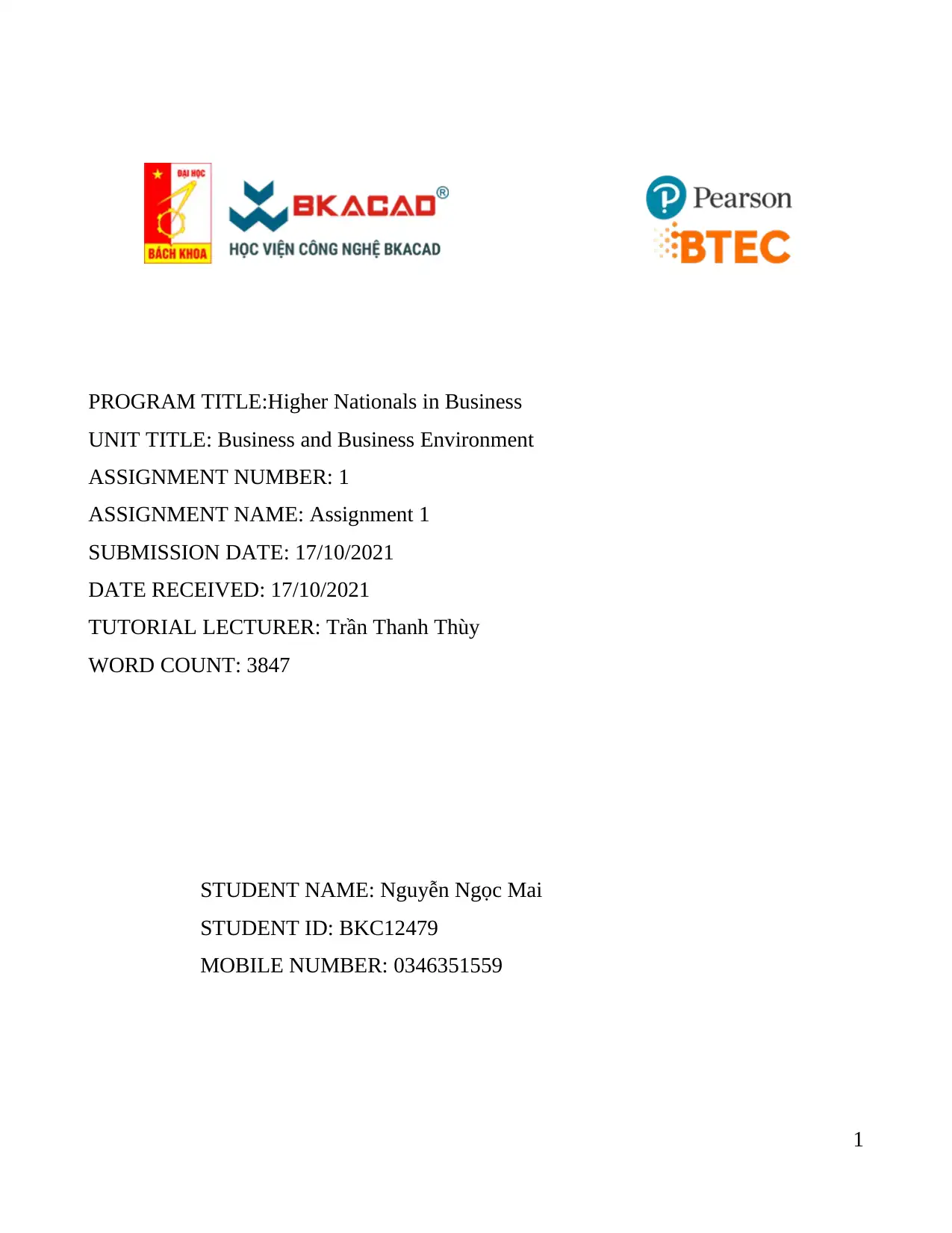
PROGRAM TITLE:Higher Nationals in Business
UNIT TITLE: Business and Business Environment
ASSIGNMENT NUMBER: 1
ASSIGNMENT NAME: Assignment 1
SUBMISSION DATE: 17/10/2021
DATE RECEIVED: 17/10/2021
TUTORIAL LECTURER: Trần Thanh Thùy
WORD COUNT: 3847
STUDENT NAME: Nguyễn Ngọc Mai
STUDENT ID: BKC12479
MOBILE NUMBER: 0346351559
1
UNIT TITLE: Business and Business Environment
ASSIGNMENT NUMBER: 1
ASSIGNMENT NAME: Assignment 1
SUBMISSION DATE: 17/10/2021
DATE RECEIVED: 17/10/2021
TUTORIAL LECTURER: Trần Thanh Thùy
WORD COUNT: 3847
STUDENT NAME: Nguyễn Ngọc Mai
STUDENT ID: BKC12479
MOBILE NUMBER: 0346351559
1
Paraphrase This Document
Need a fresh take? Get an instant paraphrase of this document with our AI Paraphraser
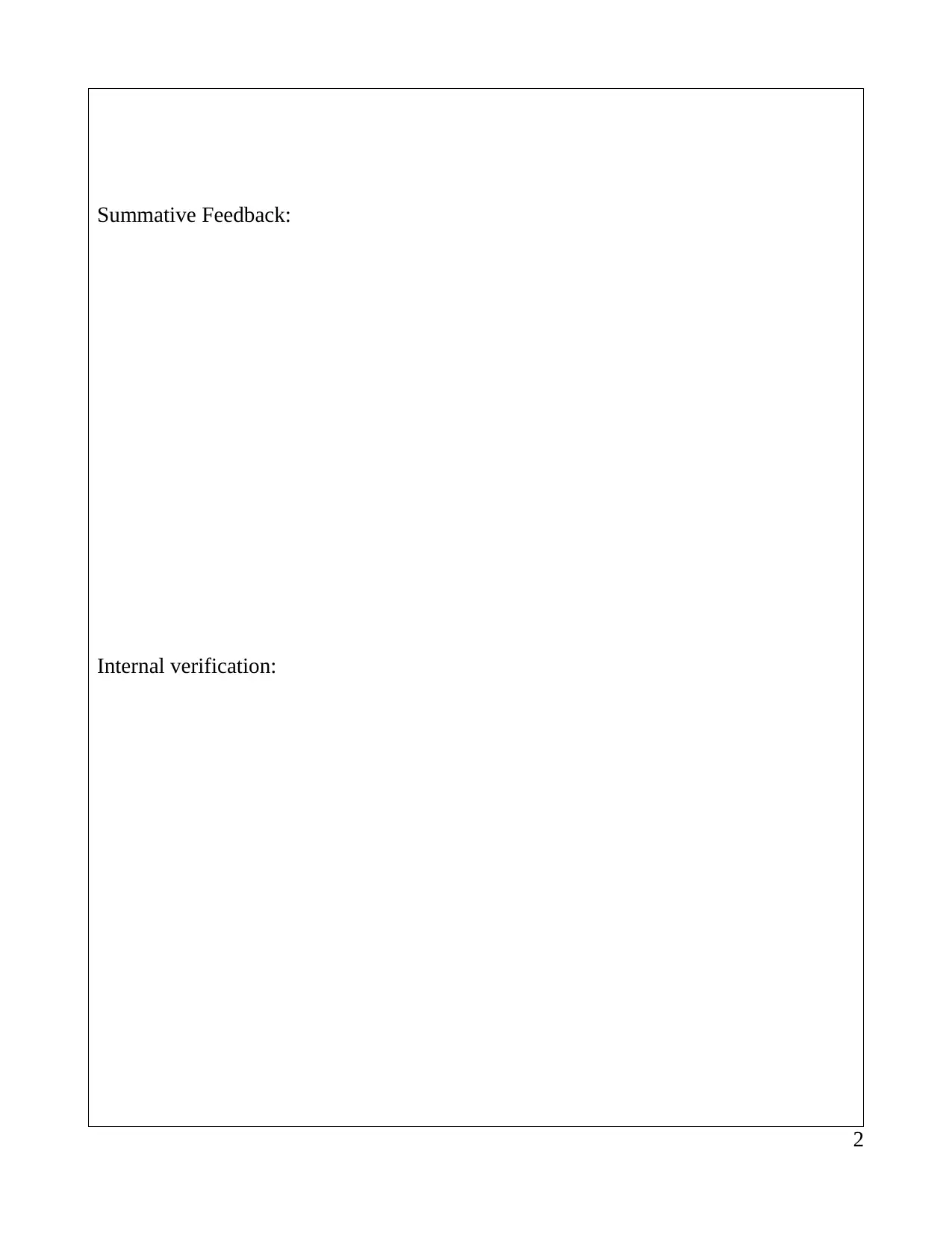
Summative Feedback:
Internal verification:
2
Internal verification:
2
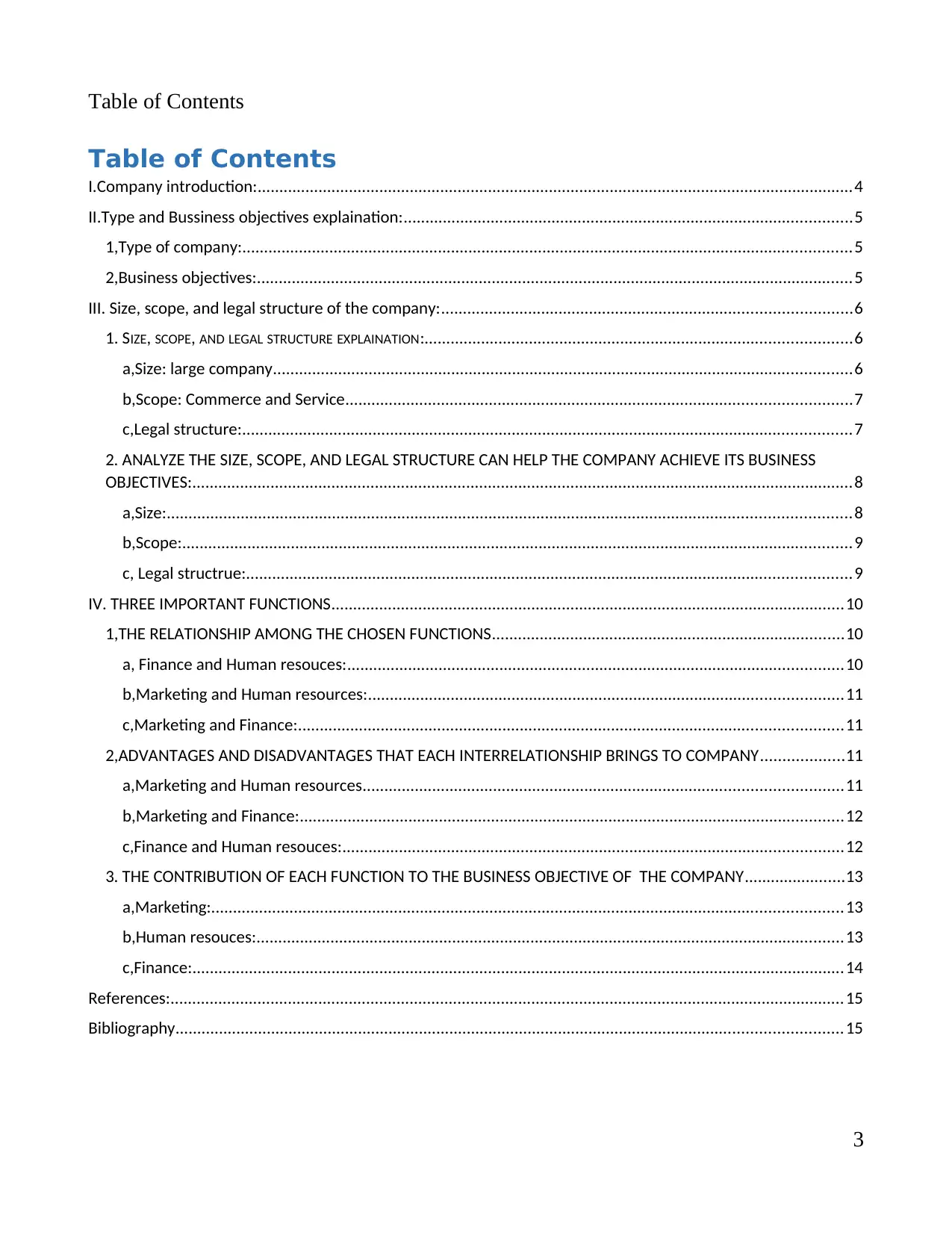
Table of Contents
Table of Contents
I.Company introduction:.........................................................................................................................................4
II.Type and Bussiness objectives explaination:.......................................................................................................5
1,Type of company:............................................................................................................................................5
2,Business objectives:.........................................................................................................................................5
III. Size, scope, and legal structure of the company:..............................................................................................6
1. SIZE, SCOPE, AND LEGAL STRUCTURE EXPLAINATION:..................................................................................................6
a,Size: large company.....................................................................................................................................6
b,Scope: Commerce and Service....................................................................................................................7
c,Legal structure:............................................................................................................................................7
2. ANALYZE THE SIZE, SCOPE, AND LEGAL STRUCTURE CAN HELP THE COMPANY ACHIEVE ITS BUSINESS
OBJECTIVES:........................................................................................................................................................8
a,Size:.............................................................................................................................................................8
b,Scope:..........................................................................................................................................................9
c, Legal structrue:...........................................................................................................................................9
IV. THREE IMPORTANT FUNCTIONS......................................................................................................................10
1,THE RELATIONSHIP AMONG THE CHOSEN FUNCTIONS.................................................................................10
a, Finance and Human resouces:..................................................................................................................10
b,Marketing and Human resources:.............................................................................................................11
c,Marketing and Finance:.............................................................................................................................11
2,ADVANTAGES AND DISADVANTAGES THAT EACH INTERRELATIONSHIP BRINGS TO COMPANY...................11
a,Marketing and Human resources..............................................................................................................11
b,Marketing and Finance:.............................................................................................................................12
c,Finance and Human resouces:...................................................................................................................12
3. THE CONTRIBUTION OF EACH FUNCTION TO THE BUSINESS OBJECTIVE OF THE COMPANY.......................13
a,Marketing:.................................................................................................................................................13
b,Human resouces:.......................................................................................................................................13
c,Finance:......................................................................................................................................................14
References:...........................................................................................................................................................15
Bibliography.........................................................................................................................................................15
3
Table of Contents
I.Company introduction:.........................................................................................................................................4
II.Type and Bussiness objectives explaination:.......................................................................................................5
1,Type of company:............................................................................................................................................5
2,Business objectives:.........................................................................................................................................5
III. Size, scope, and legal structure of the company:..............................................................................................6
1. SIZE, SCOPE, AND LEGAL STRUCTURE EXPLAINATION:..................................................................................................6
a,Size: large company.....................................................................................................................................6
b,Scope: Commerce and Service....................................................................................................................7
c,Legal structure:............................................................................................................................................7
2. ANALYZE THE SIZE, SCOPE, AND LEGAL STRUCTURE CAN HELP THE COMPANY ACHIEVE ITS BUSINESS
OBJECTIVES:........................................................................................................................................................8
a,Size:.............................................................................................................................................................8
b,Scope:..........................................................................................................................................................9
c, Legal structrue:...........................................................................................................................................9
IV. THREE IMPORTANT FUNCTIONS......................................................................................................................10
1,THE RELATIONSHIP AMONG THE CHOSEN FUNCTIONS.................................................................................10
a, Finance and Human resouces:..................................................................................................................10
b,Marketing and Human resources:.............................................................................................................11
c,Marketing and Finance:.............................................................................................................................11
2,ADVANTAGES AND DISADVANTAGES THAT EACH INTERRELATIONSHIP BRINGS TO COMPANY...................11
a,Marketing and Human resources..............................................................................................................11
b,Marketing and Finance:.............................................................................................................................12
c,Finance and Human resouces:...................................................................................................................12
3. THE CONTRIBUTION OF EACH FUNCTION TO THE BUSINESS OBJECTIVE OF THE COMPANY.......................13
a,Marketing:.................................................................................................................................................13
b,Human resouces:.......................................................................................................................................13
c,Finance:......................................................................................................................................................14
References:...........................................................................................................................................................15
Bibliography.........................................................................................................................................................15
3
⊘ This is a preview!⊘
Do you want full access?
Subscribe today to unlock all pages.

Trusted by 1+ million students worldwide
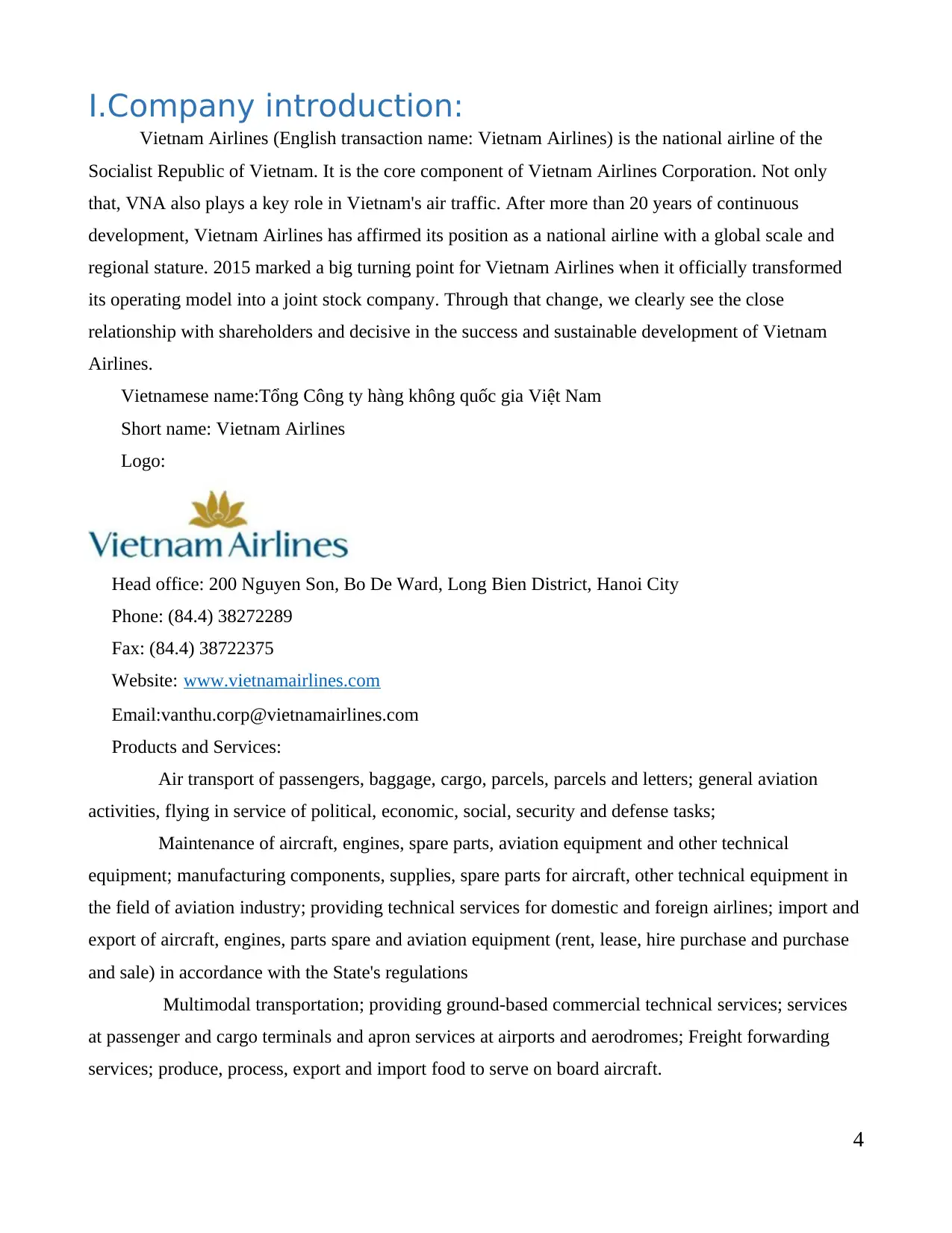
I.Company introduction:
Vietnam Airlines (English transaction name: Vietnam Airlines) is the national airline of the
Socialist Republic of Vietnam. It is the core component of Vietnam Airlines Corporation. Not only
that, VNA also plays a key role in Vietnam's air traffic. After more than 20 years of continuous
development, Vietnam Airlines has affirmed its position as a national airline with a global scale and
regional stature. 2015 marked a big turning point for Vietnam Airlines when it officially transformed
its operating model into a joint stock company. Through that change, we clearly see the close
relationship with shareholders and decisive in the success and sustainable development of Vietnam
Airlines.
Vietnamese name:Tổng Công ty hàng không quốc gia Việt Nam
Short name: Vietnam Airlines
Logo:
Head office: 200 Nguyen Son, Bo De Ward, Long Bien District, Hanoi City
Phone: (84.4) 38272289
Fax: (84.4) 38722375
Website: www.vietnamairlines.com
Email:vanthu.corp@vietnamairlines.com
Products and Services:
Air transport of passengers, baggage, cargo, parcels, parcels and letters; general aviation
activities, flying in service of political, economic, social, security and defense tasks;
Maintenance of aircraft, engines, spare parts, aviation equipment and other technical
equipment; manufacturing components, supplies, spare parts for aircraft, other technical equipment in
the field of aviation industry; providing technical services for domestic and foreign airlines; import and
export of aircraft, engines, parts spare and aviation equipment (rent, lease, hire purchase and purchase
and sale) in accordance with the State's regulations
Multimodal transportation; providing ground-based commercial technical services; services
at passenger and cargo terminals and apron services at airports and aerodromes; Freight forwarding
services; produce, process, export and import food to serve on board aircraft.
4
Vietnam Airlines (English transaction name: Vietnam Airlines) is the national airline of the
Socialist Republic of Vietnam. It is the core component of Vietnam Airlines Corporation. Not only
that, VNA also plays a key role in Vietnam's air traffic. After more than 20 years of continuous
development, Vietnam Airlines has affirmed its position as a national airline with a global scale and
regional stature. 2015 marked a big turning point for Vietnam Airlines when it officially transformed
its operating model into a joint stock company. Through that change, we clearly see the close
relationship with shareholders and decisive in the success and sustainable development of Vietnam
Airlines.
Vietnamese name:Tổng Công ty hàng không quốc gia Việt Nam
Short name: Vietnam Airlines
Logo:
Head office: 200 Nguyen Son, Bo De Ward, Long Bien District, Hanoi City
Phone: (84.4) 38272289
Fax: (84.4) 38722375
Website: www.vietnamairlines.com
Email:vanthu.corp@vietnamairlines.com
Products and Services:
Air transport of passengers, baggage, cargo, parcels, parcels and letters; general aviation
activities, flying in service of political, economic, social, security and defense tasks;
Maintenance of aircraft, engines, spare parts, aviation equipment and other technical
equipment; manufacturing components, supplies, spare parts for aircraft, other technical equipment in
the field of aviation industry; providing technical services for domestic and foreign airlines; import and
export of aircraft, engines, parts spare and aviation equipment (rent, lease, hire purchase and purchase
and sale) in accordance with the State's regulations
Multimodal transportation; providing ground-based commercial technical services; services
at passenger and cargo terminals and apron services at airports and aerodromes; Freight forwarding
services; produce, process, export and import food to serve on board aircraft.
4
Paraphrase This Document
Need a fresh take? Get an instant paraphrase of this document with our AI Paraphraser
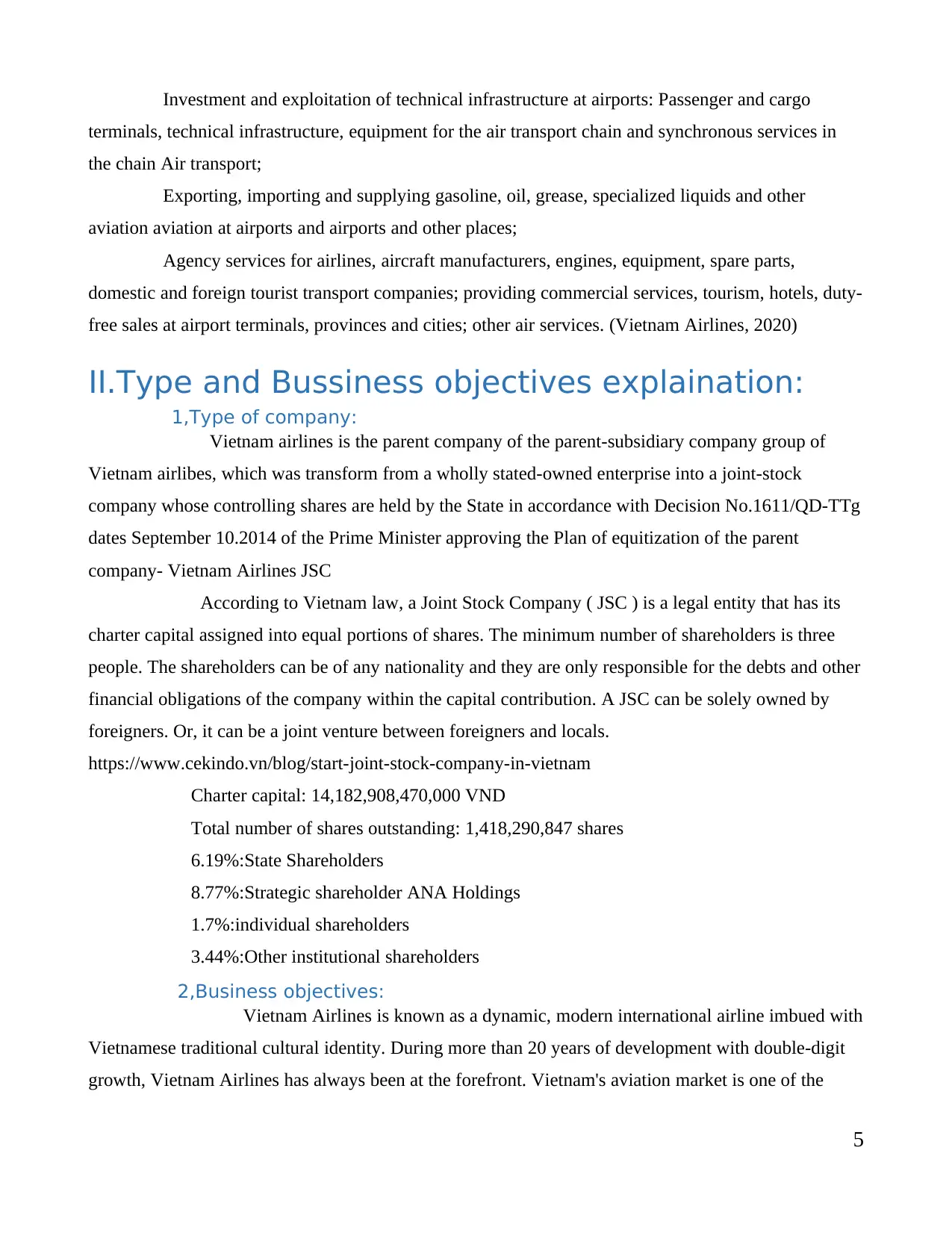
Investment and exploitation of technical infrastructure at airports: Passenger and cargo
terminals, technical infrastructure, equipment for the air transport chain and synchronous services in
the chain Air transport;
Exporting, importing and supplying gasoline, oil, grease, specialized liquids and other
aviation aviation at airports and airports and other places;
Agency services for airlines, aircraft manufacturers, engines, equipment, spare parts,
domestic and foreign tourist transport companies; providing commercial services, tourism, hotels, duty-
free sales at airport terminals, provinces and cities; other air services. (Vietnam Airlines, 2020)
II.Type and Bussiness objectives explaination:
1,Type of company:
Vietnam airlines is the parent company of the parent-subsidiary company group of
Vietnam airlibes, which was transform from a wholly stated-owned enterprise into a joint-stock
company whose controlling shares are held by the State in accordance with Decision No.1611/QD-TTg
dates September 10.2014 of the Prime Minister approving the Plan of equitization of the parent
company- Vietnam Airlines JSC
According to Vietnam law, a Joint Stock Company ( JSC ) is a legal entity that has its
charter capital assigned into equal portions of shares. The minimum number of shareholders is three
people. The shareholders can be of any nationality and they are only responsible for the debts and other
financial obligations of the company within the capital contribution. A JSC can be solely owned by
foreigners. Or, it can be a joint venture between foreigners and locals.
https://www.cekindo.vn/blog/start-joint-stock-company-in-vietnam
Charter capital: 14,182,908,470,000 VND
Total number of shares outstanding: 1,418,290,847 shares
6.19%:State Shareholders
8.77%:Strategic shareholder ANA Holdings
1.7%:individual shareholders
3.44%:Other institutional shareholders
2,Business objectives:
Vietnam Airlines is known as a dynamic, modern international airline imbued with
Vietnamese traditional cultural identity. During more than 20 years of development with double-digit
growth, Vietnam Airlines has always been at the forefront. Vietnam's aviation market is one of the
5
terminals, technical infrastructure, equipment for the air transport chain and synchronous services in
the chain Air transport;
Exporting, importing and supplying gasoline, oil, grease, specialized liquids and other
aviation aviation at airports and airports and other places;
Agency services for airlines, aircraft manufacturers, engines, equipment, spare parts,
domestic and foreign tourist transport companies; providing commercial services, tourism, hotels, duty-
free sales at airport terminals, provinces and cities; other air services. (Vietnam Airlines, 2020)
II.Type and Bussiness objectives explaination:
1,Type of company:
Vietnam airlines is the parent company of the parent-subsidiary company group of
Vietnam airlibes, which was transform from a wholly stated-owned enterprise into a joint-stock
company whose controlling shares are held by the State in accordance with Decision No.1611/QD-TTg
dates September 10.2014 of the Prime Minister approving the Plan of equitization of the parent
company- Vietnam Airlines JSC
According to Vietnam law, a Joint Stock Company ( JSC ) is a legal entity that has its
charter capital assigned into equal portions of shares. The minimum number of shareholders is three
people. The shareholders can be of any nationality and they are only responsible for the debts and other
financial obligations of the company within the capital contribution. A JSC can be solely owned by
foreigners. Or, it can be a joint venture between foreigners and locals.
https://www.cekindo.vn/blog/start-joint-stock-company-in-vietnam
Charter capital: 14,182,908,470,000 VND
Total number of shares outstanding: 1,418,290,847 shares
6.19%:State Shareholders
8.77%:Strategic shareholder ANA Holdings
1.7%:individual shareholders
3.44%:Other institutional shareholders
2,Business objectives:
Vietnam Airlines is known as a dynamic, modern international airline imbued with
Vietnamese traditional cultural identity. During more than 20 years of development with double-digit
growth, Vietnam Airlines has always been at the forefront. Vietnam's aviation market is one of the
5
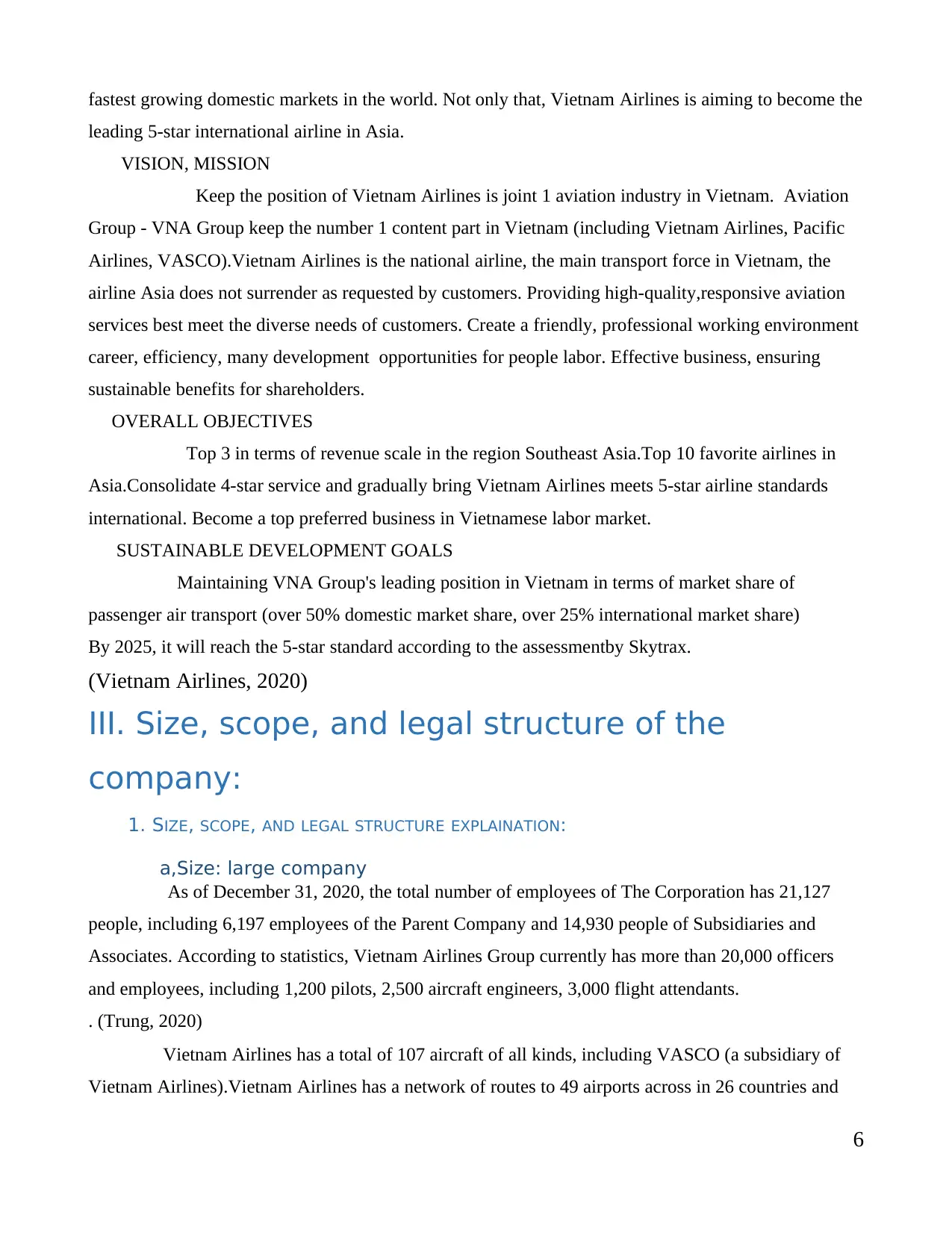
fastest growing domestic markets in the world. Not only that, Vietnam Airlines is aiming to become the
leading 5-star international airline in Asia.
VISION, MISSION
Keep the position of Vietnam Airlines is joint 1 aviation industry in Vietnam. Aviation
Group - VNA Group keep the number 1 content part in Vietnam (including Vietnam Airlines, Pacific
Airlines, VASCO).Vietnam Airlines is the national airline, the main transport force in Vietnam, the
airline Asia does not surrender as requested by customers. Providing high-quality,responsive aviation
services best meet the diverse needs of customers. Create a friendly, professional working environment
career, efficiency, many development opportunities for people labor. Effective business, ensuring
sustainable benefits for shareholders.
OVERALL OBJECTIVES
Top 3 in terms of revenue scale in the region Southeast Asia.Top 10 favorite airlines in
Asia.Consolidate 4-star service and gradually bring Vietnam Airlines meets 5-star airline standards
international. Become a top preferred business in Vietnamese labor market.
SUSTAINABLE DEVELOPMENT GOALS
Maintaining VNA Group's leading position in Vietnam in terms of market share of
passenger air transport (over 50% domestic market share, over 25% international market share)
By 2025, it will reach the 5-star standard according to the assessmentby Skytrax.
(Vietnam Airlines, 2020)
III. Size, scope, and legal structure of the
company:
1. SIZE, SCOPE, AND LEGAL STRUCTURE EXPLAINATION:
a,Size: large company
As of December 31, 2020, the total number of employees of The Corporation has 21,127
people, including 6,197 employees of the Parent Company and 14,930 people of Subsidiaries and
Associates. According to statistics, Vietnam Airlines Group currently has more than 20,000 officers
and employees, including 1,200 pilots, 2,500 aircraft engineers, 3,000 flight attendants.
. (Trung, 2020)
Vietnam Airlines has a total of 107 aircraft of all kinds, including VASCO (a subsidiary of
Vietnam Airlines).Vietnam Airlines has a network of routes to 49 airports across in 26 countries and
6
leading 5-star international airline in Asia.
VISION, MISSION
Keep the position of Vietnam Airlines is joint 1 aviation industry in Vietnam. Aviation
Group - VNA Group keep the number 1 content part in Vietnam (including Vietnam Airlines, Pacific
Airlines, VASCO).Vietnam Airlines is the national airline, the main transport force in Vietnam, the
airline Asia does not surrender as requested by customers. Providing high-quality,responsive aviation
services best meet the diverse needs of customers. Create a friendly, professional working environment
career, efficiency, many development opportunities for people labor. Effective business, ensuring
sustainable benefits for shareholders.
OVERALL OBJECTIVES
Top 3 in terms of revenue scale in the region Southeast Asia.Top 10 favorite airlines in
Asia.Consolidate 4-star service and gradually bring Vietnam Airlines meets 5-star airline standards
international. Become a top preferred business in Vietnamese labor market.
SUSTAINABLE DEVELOPMENT GOALS
Maintaining VNA Group's leading position in Vietnam in terms of market share of
passenger air transport (over 50% domestic market share, over 25% international market share)
By 2025, it will reach the 5-star standard according to the assessmentby Skytrax.
(Vietnam Airlines, 2020)
III. Size, scope, and legal structure of the
company:
1. SIZE, SCOPE, AND LEGAL STRUCTURE EXPLAINATION:
a,Size: large company
As of December 31, 2020, the total number of employees of The Corporation has 21,127
people, including 6,197 employees of the Parent Company and 14,930 people of Subsidiaries and
Associates. According to statistics, Vietnam Airlines Group currently has more than 20,000 officers
and employees, including 1,200 pilots, 2,500 aircraft engineers, 3,000 flight attendants.
. (Trung, 2020)
Vietnam Airlines has a total of 107 aircraft of all kinds, including VASCO (a subsidiary of
Vietnam Airlines).Vietnam Airlines has a network of routes to 49 airports across in 26 countries and
6
⊘ This is a preview!⊘
Do you want full access?
Subscribe today to unlock all pages.

Trusted by 1+ million students worldwide
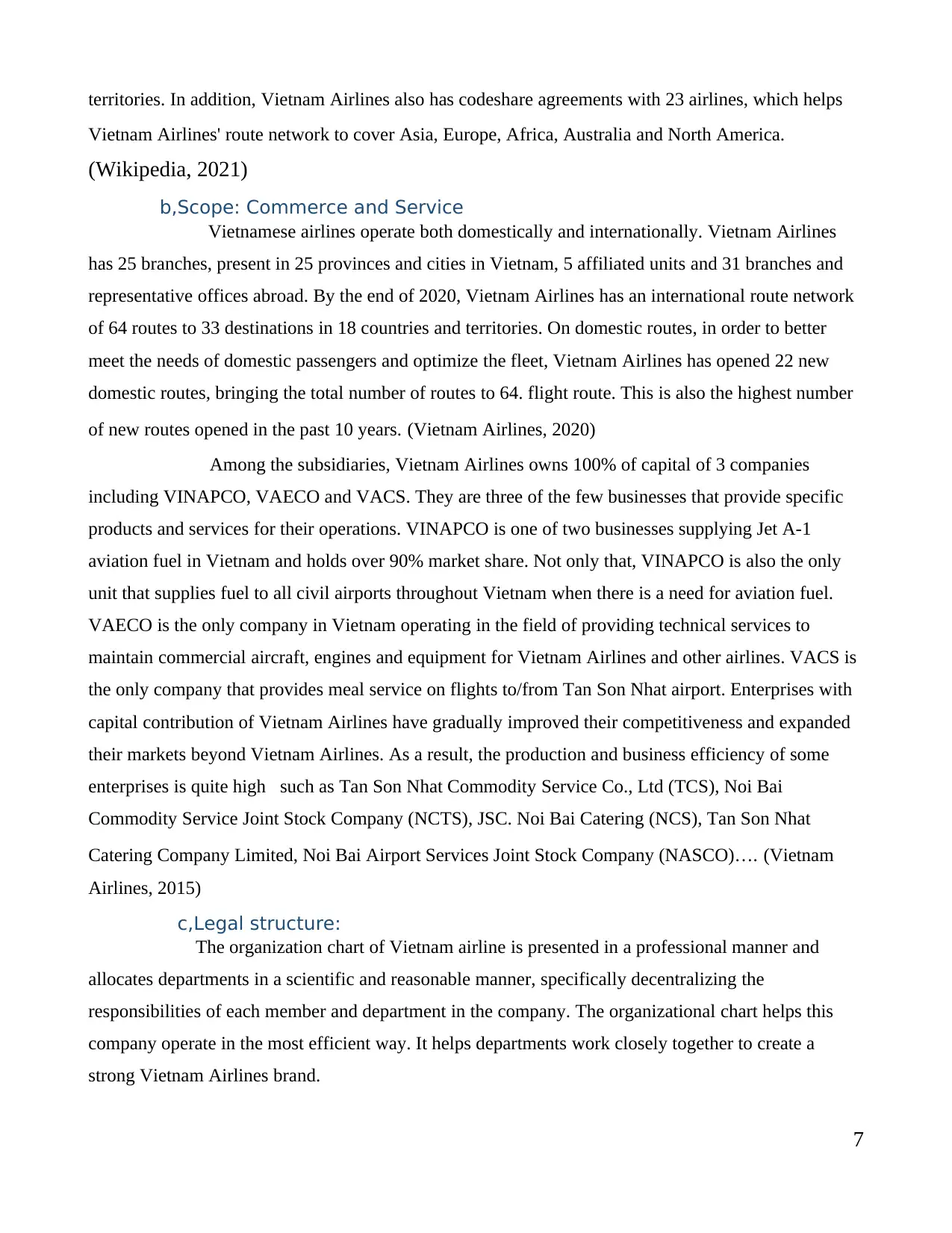
territories. In addition, Vietnam Airlines also has codeshare agreements with 23 airlines, which helps
Vietnam Airlines' route network to cover Asia, Europe, Africa, Australia and North America.
(Wikipedia, 2021)
b,Scope: Commerce and Service
Vietnamese airlines operate both domestically and internationally. Vietnam Airlines
has 25 branches, present in 25 provinces and cities in Vietnam, 5 affiliated units and 31 branches and
representative offices abroad. By the end of 2020, Vietnam Airlines has an international route network
of 64 routes to 33 destinations in 18 countries and territories. On domestic routes, in order to better
meet the needs of domestic passengers and optimize the fleet, Vietnam Airlines has opened 22 new
domestic routes, bringing the total number of routes to 64. flight route. This is also the highest number
of new routes opened in the past 10 years. (Vietnam Airlines, 2020)
Among the subsidiaries, Vietnam Airlines owns 100% of capital of 3 companies
including VINAPCO, VAECO and VACS. They are three of the few businesses that provide specific
products and services for their operations. VINAPCO is one of two businesses supplying Jet A-1
aviation fuel in Vietnam and holds over 90% market share. Not only that, VINAPCO is also the only
unit that supplies fuel to all civil airports throughout Vietnam when there is a need for aviation fuel.
VAECO is the only company in Vietnam operating in the field of providing technical services to
maintain commercial aircraft, engines and equipment for Vietnam Airlines and other airlines. VACS is
the only company that provides meal service on flights to/from Tan Son Nhat airport. Enterprises with
capital contribution of Vietnam Airlines have gradually improved their competitiveness and expanded
their markets beyond Vietnam Airlines. As a result, the production and business efficiency of some
enterprises is quite high such as Tan Son Nhat Commodity Service Co., Ltd (TCS), Noi Bai
Commodity Service Joint Stock Company (NCTS), JSC. Noi Bai Catering (NCS), Tan Son Nhat
Catering Company Limited, Noi Bai Airport Services Joint Stock Company (NASCO)…. (Vietnam
Airlines, 2015)
c,Legal structure:
The organization chart of Vietnam airline is presented in a professional manner and
allocates departments in a scientific and reasonable manner, specifically decentralizing the
responsibilities of each member and department in the company. The organizational chart helps this
company operate in the most efficient way. It helps departments work closely together to create a
strong Vietnam Airlines brand.
7
Vietnam Airlines' route network to cover Asia, Europe, Africa, Australia and North America.
(Wikipedia, 2021)
b,Scope: Commerce and Service
Vietnamese airlines operate both domestically and internationally. Vietnam Airlines
has 25 branches, present in 25 provinces and cities in Vietnam, 5 affiliated units and 31 branches and
representative offices abroad. By the end of 2020, Vietnam Airlines has an international route network
of 64 routes to 33 destinations in 18 countries and territories. On domestic routes, in order to better
meet the needs of domestic passengers and optimize the fleet, Vietnam Airlines has opened 22 new
domestic routes, bringing the total number of routes to 64. flight route. This is also the highest number
of new routes opened in the past 10 years. (Vietnam Airlines, 2020)
Among the subsidiaries, Vietnam Airlines owns 100% of capital of 3 companies
including VINAPCO, VAECO and VACS. They are three of the few businesses that provide specific
products and services for their operations. VINAPCO is one of two businesses supplying Jet A-1
aviation fuel in Vietnam and holds over 90% market share. Not only that, VINAPCO is also the only
unit that supplies fuel to all civil airports throughout Vietnam when there is a need for aviation fuel.
VAECO is the only company in Vietnam operating in the field of providing technical services to
maintain commercial aircraft, engines and equipment for Vietnam Airlines and other airlines. VACS is
the only company that provides meal service on flights to/from Tan Son Nhat airport. Enterprises with
capital contribution of Vietnam Airlines have gradually improved their competitiveness and expanded
their markets beyond Vietnam Airlines. As a result, the production and business efficiency of some
enterprises is quite high such as Tan Son Nhat Commodity Service Co., Ltd (TCS), Noi Bai
Commodity Service Joint Stock Company (NCTS), JSC. Noi Bai Catering (NCS), Tan Son Nhat
Catering Company Limited, Noi Bai Airport Services Joint Stock Company (NASCO)…. (Vietnam
Airlines, 2015)
c,Legal structure:
The organization chart of Vietnam airline is presented in a professional manner and
allocates departments in a scientific and reasonable manner, specifically decentralizing the
responsibilities of each member and department in the company. The organizational chart helps this
company operate in the most efficient way. It helps departments work closely together to create a
strong Vietnam Airlines brand.
7
Paraphrase This Document
Need a fresh take? Get an instant paraphrase of this document with our AI Paraphraser
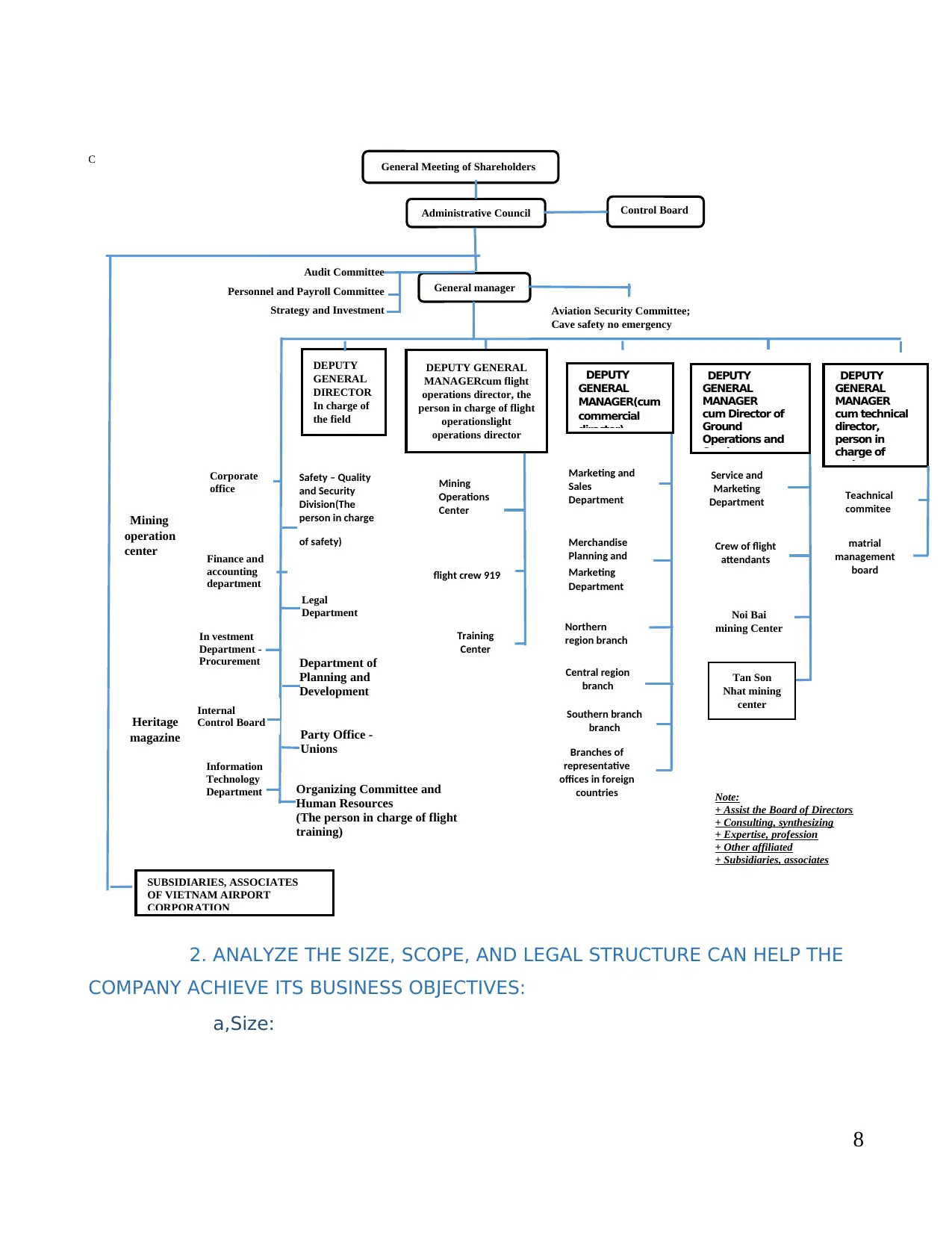
C
2. ANALYZE THE SIZE, SCOPE, AND LEGAL STRUCTURE CAN HELP THE
COMPANY ACHIEVE ITS BUSINESS OBJECTIVES:
a,Size:
8
General Meeting of Shareholders
Administrative Council
General manager
Control Board
Control
DEPUTY
GENERAL
DIRECTOR
In charge of
the field
DEPUTY GENERAL
MANAGERcum flight
operations director, the
person in charge of flight
operationslight
operations director
DEPUTY
GENERAL
MANAGER(cum
commercial
director)
DEPUTY
GENERAL
MANAGER
cum Director of
Ground
Operations and
Services,
DEPUTY
GENERAL
MANAGER
cum technical
director,
person in
charge of
maintenance
Audit Committee
Personnel and Payroll Committee
Strategy and Investment
Committee
Aviation Security Committee;
Cave safety no emergency
Teachnical
commitee
matrial
management
board
Service and
Marketing
Department
Crew of flight
attendants
Tan Son
Nhat mining
center
Noi Bai
mining Center
Marketing and
Sales
Department
Merchandise
Planning and
Marketing
Department
Northern
region branch
Central region
branch
Southern branch
branch
Branches of
representative
offices in foreign
countries
Mining
Operations
Center
flight crew 919
Training
Center
Safety – Quality
and Security
Division(The
person in charge
of safety)
SUBSIDIARIES, ASSOCIATES
OF VIETNAM AIRPORT
CORPORATION
Mining
operation
center
Heritage
magazine
Legal
Department
Department of
Planning and
Development
Party Office -
Unions
Organizing Committee and
Human Resources
(The person in charge of flight
training)
Corporate
office
Finance and
accounting
department
In vestment
Department -
Procurement
Internal
Control Board
Information
Technology
Department Note:
+ Assist the Board of Directors
+ Consulting, synthesizing
+ Expertise, profession
+ Other affiliated
+ Subsidiaries, associates
2. ANALYZE THE SIZE, SCOPE, AND LEGAL STRUCTURE CAN HELP THE
COMPANY ACHIEVE ITS BUSINESS OBJECTIVES:
a,Size:
8
General Meeting of Shareholders
Administrative Council
General manager
Control Board
Control
DEPUTY
GENERAL
DIRECTOR
In charge of
the field
DEPUTY GENERAL
MANAGERcum flight
operations director, the
person in charge of flight
operationslight
operations director
DEPUTY
GENERAL
MANAGER(cum
commercial
director)
DEPUTY
GENERAL
MANAGER
cum Director of
Ground
Operations and
Services,
DEPUTY
GENERAL
MANAGER
cum technical
director,
person in
charge of
maintenance
Audit Committee
Personnel and Payroll Committee
Strategy and Investment
Committee
Aviation Security Committee;
Cave safety no emergency
Teachnical
commitee
matrial
management
board
Service and
Marketing
Department
Crew of flight
attendants
Tan Son
Nhat mining
center
Noi Bai
mining Center
Marketing and
Sales
Department
Merchandise
Planning and
Marketing
Department
Northern
region branch
Central region
branch
Southern branch
branch
Branches of
representative
offices in foreign
countries
Mining
Operations
Center
flight crew 919
Training
Center
Safety – Quality
and Security
Division(The
person in charge
of safety)
SUBSIDIARIES, ASSOCIATES
OF VIETNAM AIRPORT
CORPORATION
Mining
operation
center
Heritage
magazine
Legal
Department
Department of
Planning and
Development
Party Office -
Unions
Organizing Committee and
Human Resources
(The person in charge of flight
training)
Corporate
office
Finance and
accounting
department
In vestment
Department -
Procurement
Internal
Control Board
Information
Technology
Department Note:
+ Assist the Board of Directors
+ Consulting, synthesizing
+ Expertise, profession
+ Other affiliated
+ Subsidiaries, associates
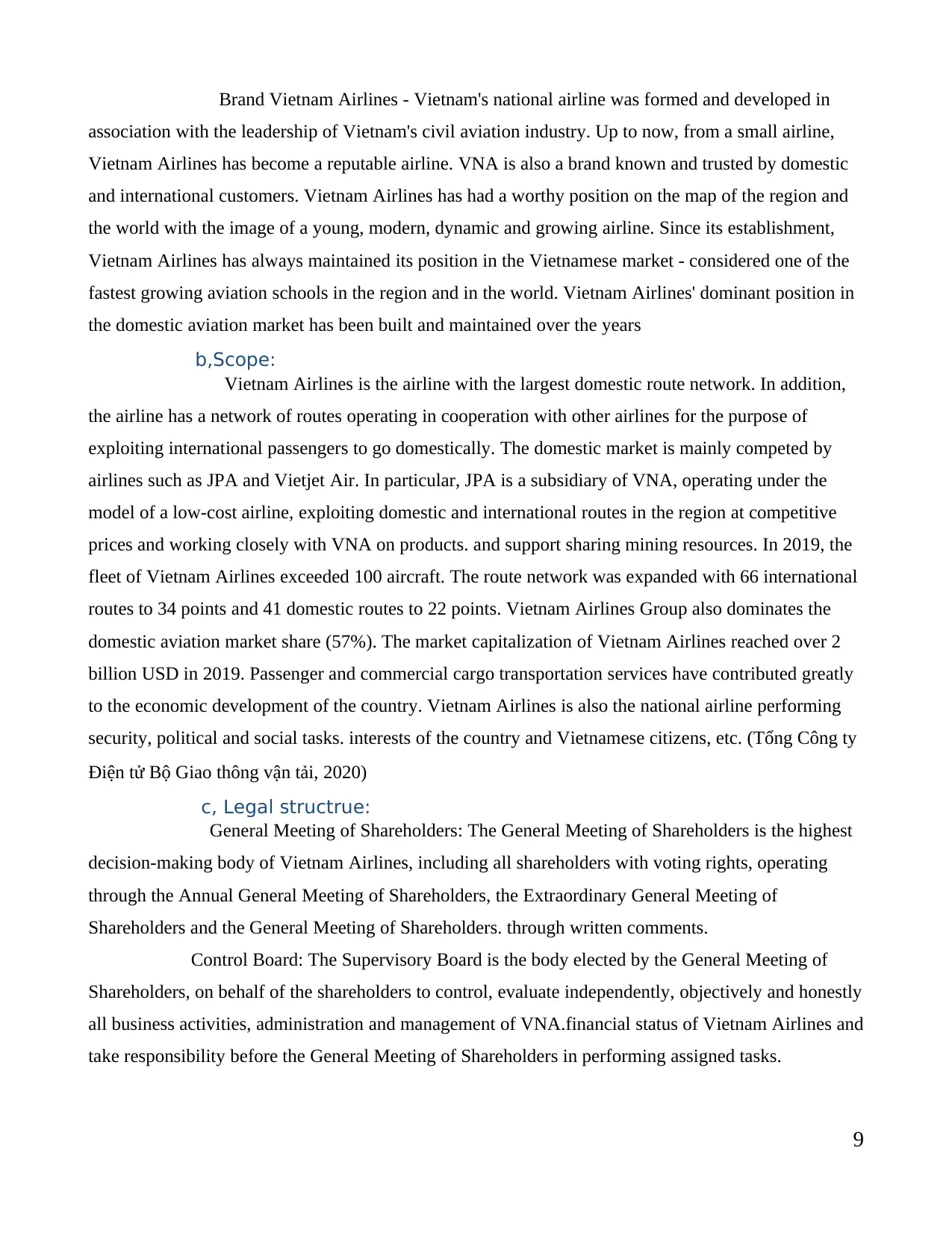
Brand Vietnam Airlines - Vietnam's national airline was formed and developed in
association with the leadership of Vietnam's civil aviation industry. Up to now, from a small airline,
Vietnam Airlines has become a reputable airline. VNA is also a brand known and trusted by domestic
and international customers. Vietnam Airlines has had a worthy position on the map of the region and
the world with the image of a young, modern, dynamic and growing airline. Since its establishment,
Vietnam Airlines has always maintained its position in the Vietnamese market - considered one of the
fastest growing aviation schools in the region and in the world. Vietnam Airlines' dominant position in
the domestic aviation market has been built and maintained over the years
b,Scope:
Vietnam Airlines is the airline with the largest domestic route network. In addition,
the airline has a network of routes operating in cooperation with other airlines for the purpose of
exploiting international passengers to go domestically. The domestic market is mainly competed by
airlines such as JPA and Vietjet Air. In particular, JPA is a subsidiary of VNA, operating under the
model of a low-cost airline, exploiting domestic and international routes in the region at competitive
prices and working closely with VNA on products. and support sharing mining resources. In 2019, the
fleet of Vietnam Airlines exceeded 100 aircraft. The route network was expanded with 66 international
routes to 34 points and 41 domestic routes to 22 points. Vietnam Airlines Group also dominates the
domestic aviation market share (57%). The market capitalization of Vietnam Airlines reached over 2
billion USD in 2019. Passenger and commercial cargo transportation services have contributed greatly
to the economic development of the country. Vietnam Airlines is also the national airline performing
security, political and social tasks. interests of the country and Vietnamese citizens, etc. (Tổng Công ty
Điện tử Bộ Giao thông vận tải, 2020)
c, Legal structrue:
General Meeting of Shareholders: The General Meeting of Shareholders is the highest
decision-making body of Vietnam Airlines, including all shareholders with voting rights, operating
through the Annual General Meeting of Shareholders, the Extraordinary General Meeting of
Shareholders and the General Meeting of Shareholders. through written comments.
Control Board: The Supervisory Board is the body elected by the General Meeting of
Shareholders, on behalf of the shareholders to control, evaluate independently, objectively and honestly
all business activities, administration and management of VNA.financial status of Vietnam Airlines and
take responsibility before the General Meeting of Shareholders in performing assigned tasks.
9
association with the leadership of Vietnam's civil aviation industry. Up to now, from a small airline,
Vietnam Airlines has become a reputable airline. VNA is also a brand known and trusted by domestic
and international customers. Vietnam Airlines has had a worthy position on the map of the region and
the world with the image of a young, modern, dynamic and growing airline. Since its establishment,
Vietnam Airlines has always maintained its position in the Vietnamese market - considered one of the
fastest growing aviation schools in the region and in the world. Vietnam Airlines' dominant position in
the domestic aviation market has been built and maintained over the years
b,Scope:
Vietnam Airlines is the airline with the largest domestic route network. In addition,
the airline has a network of routes operating in cooperation with other airlines for the purpose of
exploiting international passengers to go domestically. The domestic market is mainly competed by
airlines such as JPA and Vietjet Air. In particular, JPA is a subsidiary of VNA, operating under the
model of a low-cost airline, exploiting domestic and international routes in the region at competitive
prices and working closely with VNA on products. and support sharing mining resources. In 2019, the
fleet of Vietnam Airlines exceeded 100 aircraft. The route network was expanded with 66 international
routes to 34 points and 41 domestic routes to 22 points. Vietnam Airlines Group also dominates the
domestic aviation market share (57%). The market capitalization of Vietnam Airlines reached over 2
billion USD in 2019. Passenger and commercial cargo transportation services have contributed greatly
to the economic development of the country. Vietnam Airlines is also the national airline performing
security, political and social tasks. interests of the country and Vietnamese citizens, etc. (Tổng Công ty
Điện tử Bộ Giao thông vận tải, 2020)
c, Legal structrue:
General Meeting of Shareholders: The General Meeting of Shareholders is the highest
decision-making body of Vietnam Airlines, including all shareholders with voting rights, operating
through the Annual General Meeting of Shareholders, the Extraordinary General Meeting of
Shareholders and the General Meeting of Shareholders. through written comments.
Control Board: The Supervisory Board is the body elected by the General Meeting of
Shareholders, on behalf of the shareholders to control, evaluate independently, objectively and honestly
all business activities, administration and management of VNA.financial status of Vietnam Airlines and
take responsibility before the General Meeting of Shareholders in performing assigned tasks.
9
⊘ This is a preview!⊘
Do you want full access?
Subscribe today to unlock all pages.

Trusted by 1+ million students worldwide
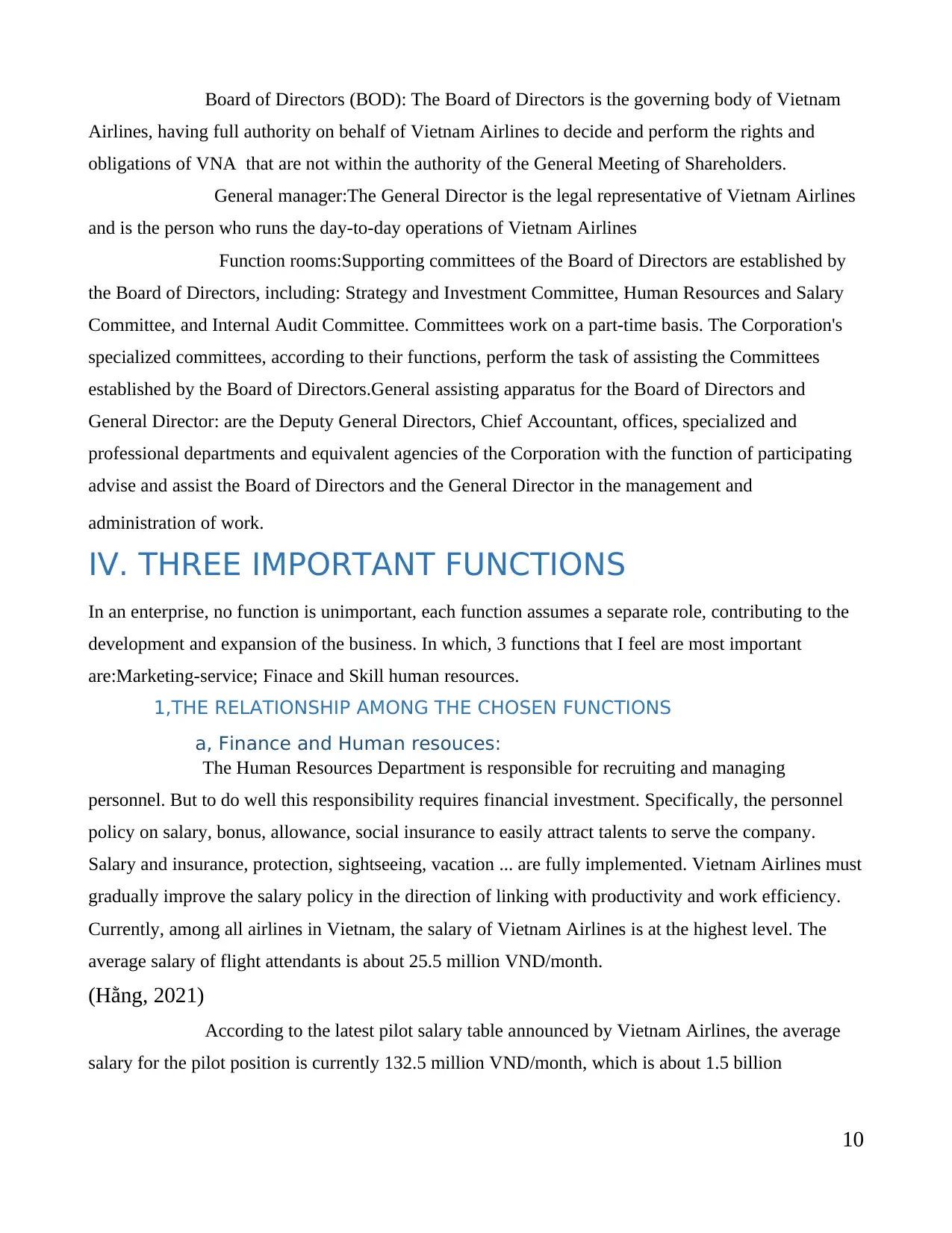
Board of Directors (BOD): The Board of Directors is the governing body of Vietnam
Airlines, having full authority on behalf of Vietnam Airlines to decide and perform the rights and
obligations of VNA that are not within the authority of the General Meeting of Shareholders.
General manager:The General Director is the legal representative of Vietnam Airlines
and is the person who runs the day-to-day operations of Vietnam Airlines
Function rooms:Supporting committees of the Board of Directors are established by
the Board of Directors, including: Strategy and Investment Committee, Human Resources and Salary
Committee, and Internal Audit Committee. Committees work on a part-time basis. The Corporation's
specialized committees, according to their functions, perform the task of assisting the Committees
established by the Board of Directors.General assisting apparatus for the Board of Directors and
General Director: are the Deputy General Directors, Chief Accountant, offices, specialized and
professional departments and equivalent agencies of the Corporation with the function of participating
advise and assist the Board of Directors and the General Director in the management and
administration of work.
IV. THREE IMPORTANT FUNCTIONS
In an enterprise, no function is unimportant, each function assumes a separate role, contributing to the
development and expansion of the business. In which, 3 functions that I feel are most important
are:Marketing-service; Finace and Skill human resources.
1,THE RELATIONSHIP AMONG THE CHOSEN FUNCTIONS
a, Finance and Human resouces:
The Human Resources Department is responsible for recruiting and managing
personnel. But to do well this responsibility requires financial investment. Specifically, the personnel
policy on salary, bonus, allowance, social insurance to easily attract talents to serve the company.
Salary and insurance, protection, sightseeing, vacation ... are fully implemented. Vietnam Airlines must
gradually improve the salary policy in the direction of linking with productivity and work efficiency.
Currently, among all airlines in Vietnam, the salary of Vietnam Airlines is at the highest level. The
average salary of flight attendants is about 25.5 million VND/month.
(Hằng, 2021)
According to the latest pilot salary table announced by Vietnam Airlines, the average
salary for the pilot position is currently 132.5 million VND/month, which is about 1.5 billion
10
Airlines, having full authority on behalf of Vietnam Airlines to decide and perform the rights and
obligations of VNA that are not within the authority of the General Meeting of Shareholders.
General manager:The General Director is the legal representative of Vietnam Airlines
and is the person who runs the day-to-day operations of Vietnam Airlines
Function rooms:Supporting committees of the Board of Directors are established by
the Board of Directors, including: Strategy and Investment Committee, Human Resources and Salary
Committee, and Internal Audit Committee. Committees work on a part-time basis. The Corporation's
specialized committees, according to their functions, perform the task of assisting the Committees
established by the Board of Directors.General assisting apparatus for the Board of Directors and
General Director: are the Deputy General Directors, Chief Accountant, offices, specialized and
professional departments and equivalent agencies of the Corporation with the function of participating
advise and assist the Board of Directors and the General Director in the management and
administration of work.
IV. THREE IMPORTANT FUNCTIONS
In an enterprise, no function is unimportant, each function assumes a separate role, contributing to the
development and expansion of the business. In which, 3 functions that I feel are most important
are:Marketing-service; Finace and Skill human resources.
1,THE RELATIONSHIP AMONG THE CHOSEN FUNCTIONS
a, Finance and Human resouces:
The Human Resources Department is responsible for recruiting and managing
personnel. But to do well this responsibility requires financial investment. Specifically, the personnel
policy on salary, bonus, allowance, social insurance to easily attract talents to serve the company.
Salary and insurance, protection, sightseeing, vacation ... are fully implemented. Vietnam Airlines must
gradually improve the salary policy in the direction of linking with productivity and work efficiency.
Currently, among all airlines in Vietnam, the salary of Vietnam Airlines is at the highest level. The
average salary of flight attendants is about 25.5 million VND/month.
(Hằng, 2021)
According to the latest pilot salary table announced by Vietnam Airlines, the average
salary for the pilot position is currently 132.5 million VND/month, which is about 1.5 billion
10
Paraphrase This Document
Need a fresh take? Get an instant paraphrase of this document with our AI Paraphraser
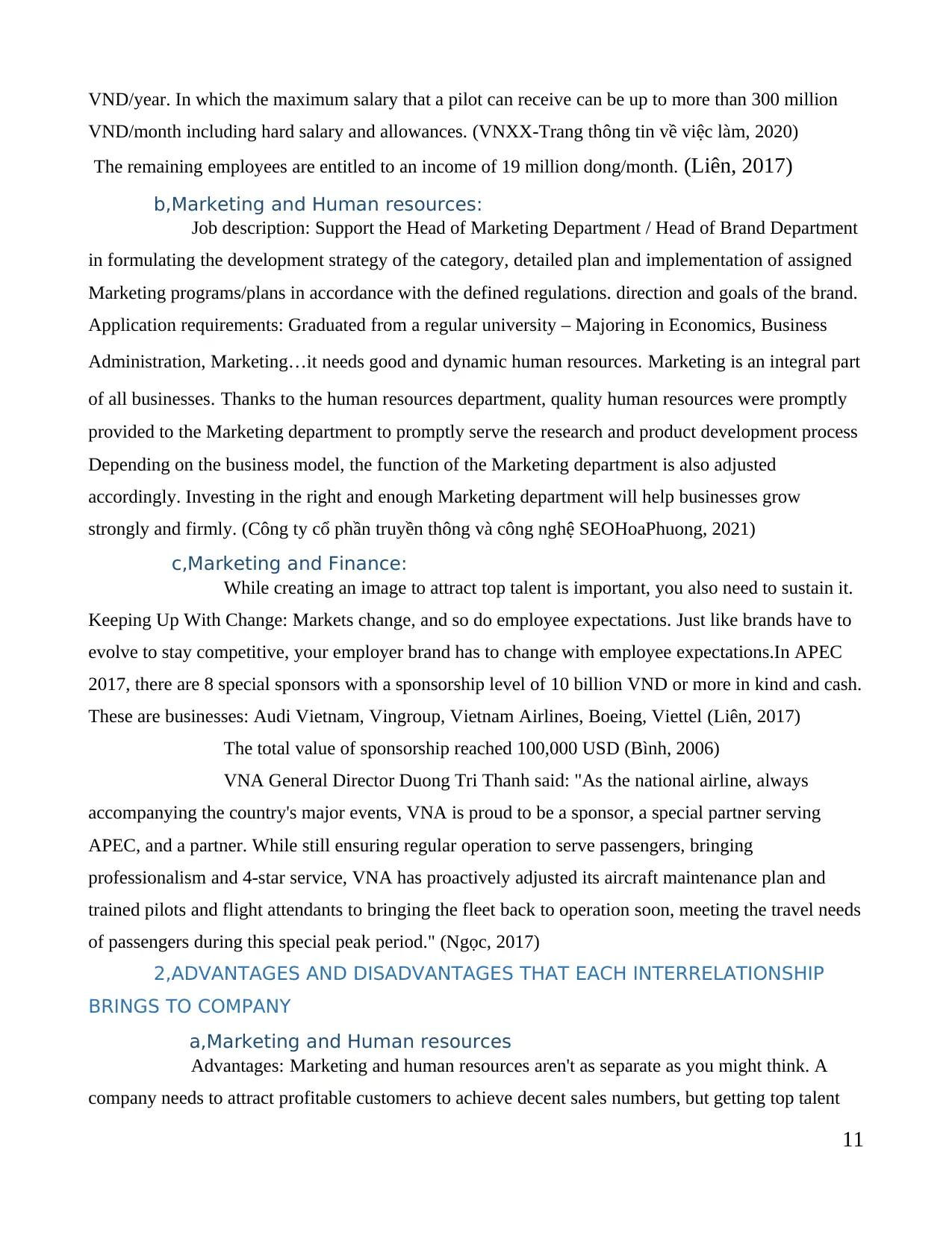
VND/year. In which the maximum salary that a pilot can receive can be up to more than 300 million
VND/month including hard salary and allowances. (VNXX-Trang thông tin về việc làm, 2020)
The remaining employees are entitled to an income of 19 million dong/month. (Liên, 2017)
b,Marketing and Human resources:
Job description: Support the Head of Marketing Department / Head of Brand Department
in formulating the development strategy of the category, detailed plan and implementation of assigned
Marketing programs/plans in accordance with the defined regulations. direction and goals of the brand.
Application requirements: Graduated from a regular university – Majoring in Economics, Business
Administration, Marketing…it needs good and dynamic human resources. Marketing is an integral part
of all businesses. Thanks to the human resources department, quality human resources were promptly
provided to the Marketing department to promptly serve the research and product development process
Depending on the business model, the function of the Marketing department is also adjusted
accordingly. Investing in the right and enough Marketing department will help businesses grow
strongly and firmly. (Công ty cổ phần truyền thông và công nghệ SEOHoaPhuong, 2021)
c,Marketing and Finance:
While creating an image to attract top talent is important, you also need to sustain it.
Keeping Up With Change: Markets change, and so do employee expectations. Just like brands have to
evolve to stay competitive, your employer brand has to change with employee expectations.In APEC
2017, there are 8 special sponsors with a sponsorship level of 10 billion VND or more in kind and cash.
These are businesses: Audi Vietnam, Vingroup, Vietnam Airlines, Boeing, Viettel (Liên, 2017)
The total value of sponsorship reached 100,000 USD (Bình, 2006)
VNA General Director Duong Tri Thanh said: "As the national airline, always
accompanying the country's major events, VNA is proud to be a sponsor, a special partner serving
APEC, and a partner. While still ensuring regular operation to serve passengers, bringing
professionalism and 4-star service, VNA has proactively adjusted its aircraft maintenance plan and
trained pilots and flight attendants to bringing the fleet back to operation soon, meeting the travel needs
of passengers during this special peak period." (Ngọc, 2017)
2,ADVANTAGES AND DISADVANTAGES THAT EACH INTERRELATIONSHIP
BRINGS TO COMPANY
a,Marketing and Human resources
Advantages: Marketing and human resources aren't as separate as you might think. A
company needs to attract profitable customers to achieve decent sales numbers, but getting top talent
11
VND/month including hard salary and allowances. (VNXX-Trang thông tin về việc làm, 2020)
The remaining employees are entitled to an income of 19 million dong/month. (Liên, 2017)
b,Marketing and Human resources:
Job description: Support the Head of Marketing Department / Head of Brand Department
in formulating the development strategy of the category, detailed plan and implementation of assigned
Marketing programs/plans in accordance with the defined regulations. direction and goals of the brand.
Application requirements: Graduated from a regular university – Majoring in Economics, Business
Administration, Marketing…it needs good and dynamic human resources. Marketing is an integral part
of all businesses. Thanks to the human resources department, quality human resources were promptly
provided to the Marketing department to promptly serve the research and product development process
Depending on the business model, the function of the Marketing department is also adjusted
accordingly. Investing in the right and enough Marketing department will help businesses grow
strongly and firmly. (Công ty cổ phần truyền thông và công nghệ SEOHoaPhuong, 2021)
c,Marketing and Finance:
While creating an image to attract top talent is important, you also need to sustain it.
Keeping Up With Change: Markets change, and so do employee expectations. Just like brands have to
evolve to stay competitive, your employer brand has to change with employee expectations.In APEC
2017, there are 8 special sponsors with a sponsorship level of 10 billion VND or more in kind and cash.
These are businesses: Audi Vietnam, Vingroup, Vietnam Airlines, Boeing, Viettel (Liên, 2017)
The total value of sponsorship reached 100,000 USD (Bình, 2006)
VNA General Director Duong Tri Thanh said: "As the national airline, always
accompanying the country's major events, VNA is proud to be a sponsor, a special partner serving
APEC, and a partner. While still ensuring regular operation to serve passengers, bringing
professionalism and 4-star service, VNA has proactively adjusted its aircraft maintenance plan and
trained pilots and flight attendants to bringing the fleet back to operation soon, meeting the travel needs
of passengers during this special peak period." (Ngọc, 2017)
2,ADVANTAGES AND DISADVANTAGES THAT EACH INTERRELATIONSHIP
BRINGS TO COMPANY
a,Marketing and Human resources
Advantages: Marketing and human resources aren't as separate as you might think. A
company needs to attract profitable customers to achieve decent sales numbers, but getting top talent
11
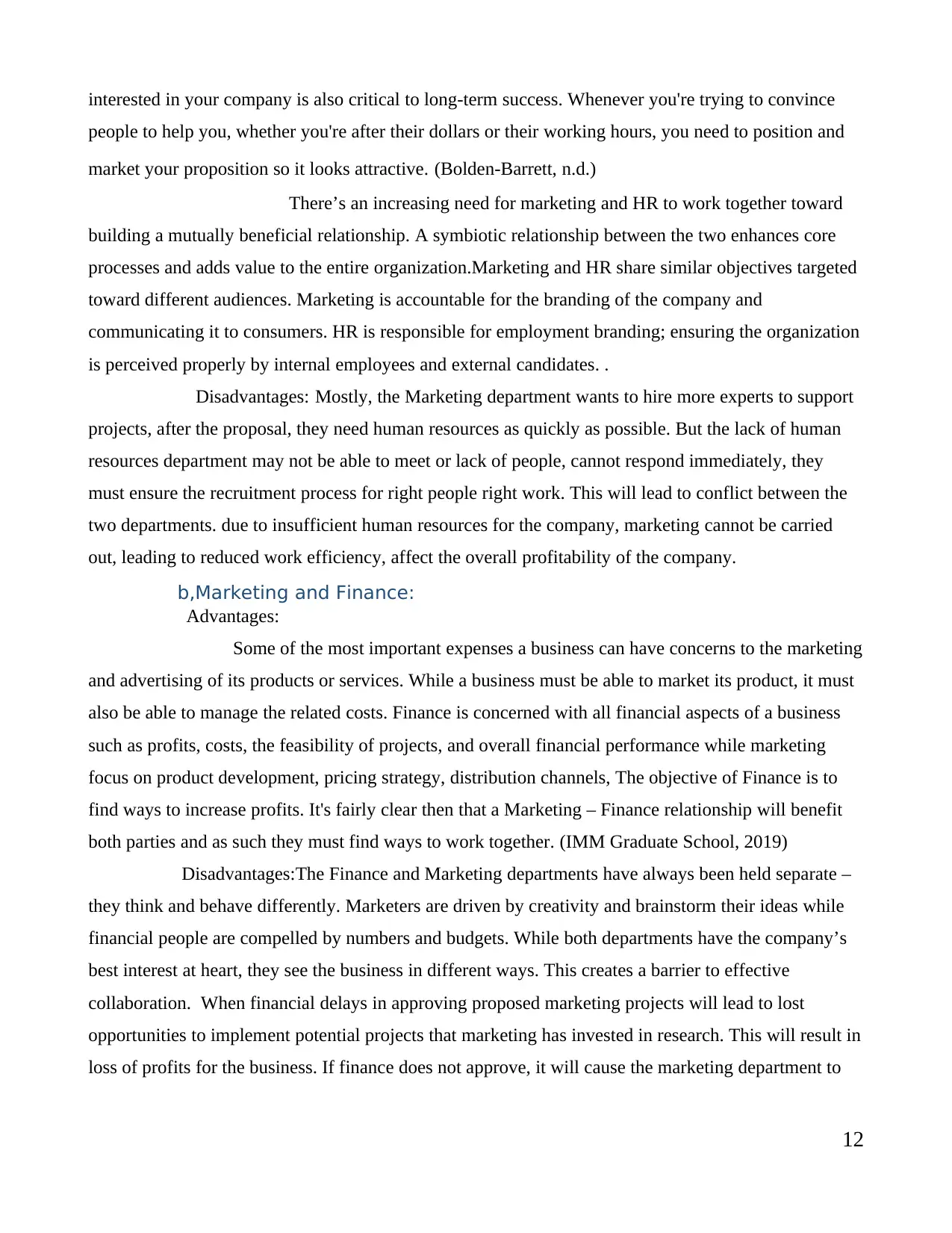
interested in your company is also critical to long-term success. Whenever you're trying to convince
people to help you, whether you're after their dollars or their working hours, you need to position and
market your proposition so it looks attractive. (Bolden-Barrett, n.d.)
There’s an increasing need for marketing and HR to work together toward
building a mutually beneficial relationship. A symbiotic relationship between the two enhances core
processes and adds value to the entire organization.Marketing and HR share similar objectives targeted
toward different audiences. Marketing is accountable for the branding of the company and
communicating it to consumers. HR is responsible for employment branding; ensuring the organization
is perceived properly by internal employees and external candidates. .
Disadvantages: Mostly, the Marketing department wants to hire more experts to support
projects, after the proposal, they need human resources as quickly as possible. But the lack of human
resources department may not be able to meet or lack of people, cannot respond immediately, they
must ensure the recruitment process for right people right work. This will lead to conflict between the
two departments. due to insufficient human resources for the company, marketing cannot be carried
out, leading to reduced work efficiency, affect the overall profitability of the company.
b,Marketing and Finance:
Advantages:
Some of the most important expenses a business can have concerns to the marketing
and advertising of its products or services. While a business must be able to market its product, it must
also be able to manage the related costs. Finance is concerned with all financial aspects of a business
such as profits, costs, the feasibility of projects, and overall financial performance while marketing
focus on product development, pricing strategy, distribution channels, The objective of Finance is to
find ways to increase profits. It's fairly clear then that a Marketing – Finance relationship will benefit
both parties and as such they must find ways to work together. (IMM Graduate School, 2019)
Disadvantages:The Finance and Marketing departments have always been held separate –
they think and behave differently. Marketers are driven by creativity and brainstorm their ideas while
financial people are compelled by numbers and budgets. While both departments have the company’s
best interest at heart, they see the business in different ways. This creates a barrier to effective
collaboration. When financial delays in approving proposed marketing projects will lead to lost
opportunities to implement potential projects that marketing has invested in research. This will result in
loss of profits for the business. If finance does not approve, it will cause the marketing department to
12
people to help you, whether you're after their dollars or their working hours, you need to position and
market your proposition so it looks attractive. (Bolden-Barrett, n.d.)
There’s an increasing need for marketing and HR to work together toward
building a mutually beneficial relationship. A symbiotic relationship between the two enhances core
processes and adds value to the entire organization.Marketing and HR share similar objectives targeted
toward different audiences. Marketing is accountable for the branding of the company and
communicating it to consumers. HR is responsible for employment branding; ensuring the organization
is perceived properly by internal employees and external candidates. .
Disadvantages: Mostly, the Marketing department wants to hire more experts to support
projects, after the proposal, they need human resources as quickly as possible. But the lack of human
resources department may not be able to meet or lack of people, cannot respond immediately, they
must ensure the recruitment process for right people right work. This will lead to conflict between the
two departments. due to insufficient human resources for the company, marketing cannot be carried
out, leading to reduced work efficiency, affect the overall profitability of the company.
b,Marketing and Finance:
Advantages:
Some of the most important expenses a business can have concerns to the marketing
and advertising of its products or services. While a business must be able to market its product, it must
also be able to manage the related costs. Finance is concerned with all financial aspects of a business
such as profits, costs, the feasibility of projects, and overall financial performance while marketing
focus on product development, pricing strategy, distribution channels, The objective of Finance is to
find ways to increase profits. It's fairly clear then that a Marketing – Finance relationship will benefit
both parties and as such they must find ways to work together. (IMM Graduate School, 2019)
Disadvantages:The Finance and Marketing departments have always been held separate –
they think and behave differently. Marketers are driven by creativity and brainstorm their ideas while
financial people are compelled by numbers and budgets. While both departments have the company’s
best interest at heart, they see the business in different ways. This creates a barrier to effective
collaboration. When financial delays in approving proposed marketing projects will lead to lost
opportunities to implement potential projects that marketing has invested in research. This will result in
loss of profits for the business. If finance does not approve, it will cause the marketing department to
12
⊘ This is a preview!⊘
Do you want full access?
Subscribe today to unlock all pages.

Trusted by 1+ million students worldwide
1 out of 19
Your All-in-One AI-Powered Toolkit for Academic Success.
+13062052269
info@desklib.com
Available 24*7 on WhatsApp / Email
![[object Object]](/_next/static/media/star-bottom.7253800d.svg)
Unlock your academic potential
Copyright © 2020–2025 A2Z Services. All Rights Reserved. Developed and managed by ZUCOL.

